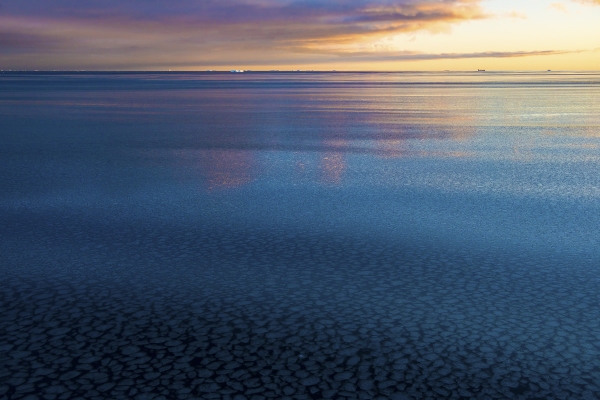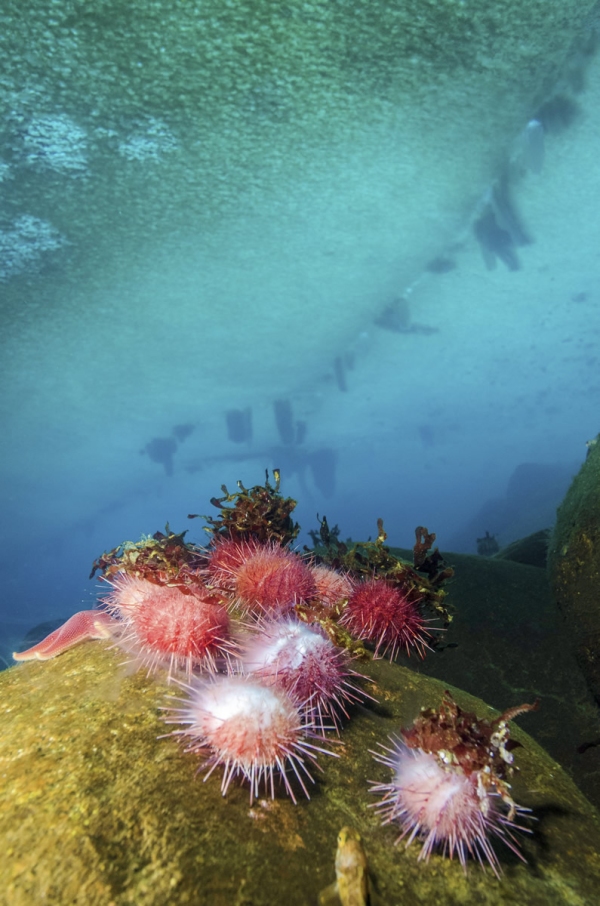Cool moves
The Antarctic continues to fascinate the public and scientists alike.
At the end of this year, NIWA scientists will head there again.
NIWA scientists who pioneered techniques to investigate the influence of climate change on algae living on the underside of Antarctic sea ice are returning to the cold continent in October, this time to focus on the seabed.
Drew Lohrer and Vonda Cummings are leading an international team of researchers that will follow the fate of under-ice algae after it settles to the seafloor. The algae are an important part of the food chain, with many seafloor organisms sustained by the algae that fall down from the under-surface of the ice.
Their earlier research discovered that the productivity of the under-ice algae increased when seawater pH falls (‘acidifies’) to levels associated with higher atmospheric CO₂ concentrations.
“We want to understand what could happen right across this sensitive ecosystem in response to climate change." - Drew Lohrer
They measured productivity using purpose-built chambers that were installed on the underside of sea ice, and manipulated seawater pH and temperature inside the chambers to assess future climate scenarios.
The new research will turn things upside-down, with similar chambers deployed on the seafloor instead of on the underside of sea ice. The quantity of algae reaching the seafloor is predicted to change with climate warming, and this could alter the communities of microbes and fauna living on the seabed.
“We want to understand what could happen right across this sensitive ecosystem in response to climate change.
“The first block of research showed that climate-related changes are likely to increase algal production.
“So the next question is: what happens if the supply of food to the seabed is increased?” Drew says.
The plan for the upcoming season is to collect large quantities of algae from the under-surface of the ice and to add it to the chambers on the seafloor every day for two to three weeks.
A series of measurements will be made throughout the experiment to track the responses of animals such as scallops and brittle stars, and to monitor the seafloor community’s oxygen consumption and nutrient regeneration rates.
The communities of organisms living under sea ice and on the seafloor cannot be recreated in a laboratory setting. “We had to take our lab to them. The chambers allow us to change one or two parameters at a time in a controlled manner. Everything else about their lives remains the same.”
Expanding the testing sites
The team is expanding the testing sites beyond those used in the original sea-ice experiment.
“We’re including one particularly food-poor location where the ice is thicker and very little light gets through. The addition of food at this site may make quite a difference.”
Drew says the chambers will allow the researchers to add food evenly to specific patches of sediment.
“If the added algae enrich the sediment enough, the seafloor communities may change as animals migrate toward the patches,” he says.
The seabed research is part of a larger NIWA-led multiorganisation project called Resilience of Antarctic Biota and Ecosystems, funded by the New Zealand Antarctic Research Institute (NZARI). The aim is to determine the relative vulnerabilities of Antarctic marine, lake and terrestrial ecosystems to climate-related changes.
[This feature appeared in Water & Atmosphere 19]


